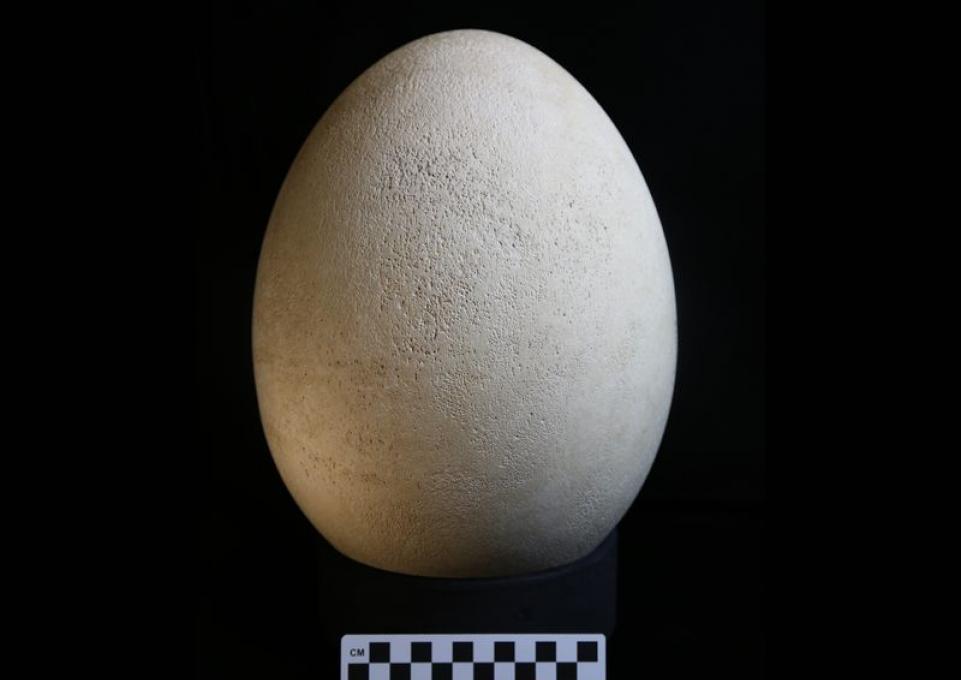
Buffalo State’s Patricia H. and Richard E. Garman Art Conservation Department played a role in a recent scientific discovery of international significance, one spanning centuries and continents.
The mystery began with a mislabeled egg. While looking in a cabinet in February, Paige Langle, the collections manager of zoology at the Buffalo Museum of Science, found a foot-long, cream-colored egg that was labeled a model. She suspected it might be a rare elephant bird egg. She and her colleagues dug through archives to discover that the museum had purchased a sub-fossilized elephant bird egg from Edward Gerrard & Sons of London in 1939.
She sent the specimen to Buffalo State for examination. Jiuan Jiuan Chen, assistant professor in conservation imaging, technical examination, and documentation; Jonathan Thornton, professor of objects conservation; and three second-year art conservation students examined the egg. They used radiography to see inside and concluded that it was no model, but rather an egg that may have been fertilized. It belongs to that of a long-extinct elephant bird that stood 10 feet high and roamed the island of Madagascar in the 1500s.
Smithsonian magazine wrote an article about the discovery. The story was covered by several other news outlets, including Newsweek and the Buffalo News.
The egg will be displayed in the museum’s Rethink Extinct gallery starting May 1. Fewer than 40 such eggs are known to exist in public institutions.
“Over the years, we’ve had a mutually beneficial relationship with the Buffalo Museum of Science that has been truly incredible,” said Meredeth Lavelle, program manager for art conservation. “Our faculty and students have completed hundreds of conservation treatments for them, and their vast collection has always been open to us for teaching and treatment projects. They are grateful for our help and we are fortunate to have access to such a unique and vast collection. It is awesome that when the museum came across this mystery, we were the first phone call that they made.”
